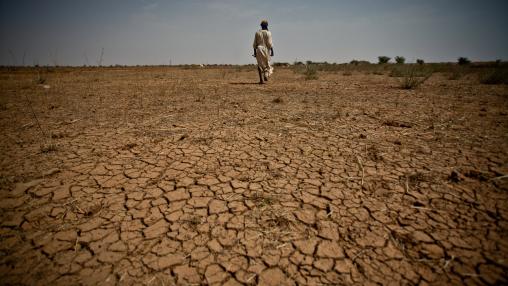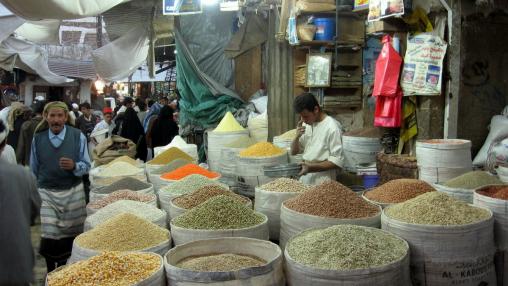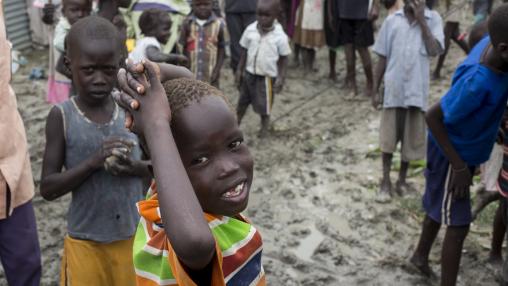The annual Global Report on Food Crises (GRFC) provides a consensus-based overview of the world’s food crises. It focuses on crises where the local capacities to respond are insufficient, prompting a request for the urgent mobilization of the international community, as well as countries/territories where there is ample evidence that the magnitude and severity of the food crisis exceed the local resources and capacities needed to respond effectively.
Key messages from Global Report on Food Crises 2025 September Update
Man-made conflict has resulted in confirmed Famine (IPC Phase 5) in both the Gaza Strip and Sudan, with additional areas in South Sudan facing a high risk of Famine. See page 2.
-
Gaza Strip (August 2025): Famine was confirmed in Gaza governorate. Conditions in North Gaza were likely similar or worse, though data limitations prevented formal classification. Famine is projected by the end of September in Deir al-Balah and Khan Younis, meaning three of five governorates could face Famine. Rafah was not analyzed due to large-scale depopulation (IPC Global Initiative, August 2025).
-
Sudan (December 2024–May 2025): Famine was confirmed in five areas and projected to spread to five additional areas in North Darfur. Seventeen other areas were assessed to be at risk of Famine (IPC Famine Review Committee, December 2024). Evidence suggests Famine conditions likely persist, with deterioration expected during the June–September lean season (IPC Alert, July 2025).
-
South Sudan (April–July 2025): Ulang and Nasir counties were identified at risk of Famine (IPC, June 2025).
About the Global Report on Food Crises
The Global Report on Food Crises, an annual report published by the Food Security Information Network (FSIN) and the Global Network Against Food Crises (GNAFC) brings together data and analysis from various early warning systems to provide a reference for coordinating humanitarian and development responses to ongoing and anticipated crises. The FSIN is a global initiative founded by FAO, WFP and IFPRI. FSIN’s work spans the effort of 16 global and regional partners committed to improving availability and quality of food security and nutrition analysis for better decision-making. It facilitates the GNAFC in obtaining better understanding of the extent and causes of food crises. The GNAFC is an alliance of humanitarian and development actors united by the commitment to tackle the root causes of food crises and promote sustainable solutions through shared analysis and knowledge, strengthened coordination in evidence-based responses and collective efforts across the humanitarian, development and peace nexus.
Global Report on Food Crises 2018
Global Report on Food Crises 2019

Sharp increase in food insecurity because of COVID-19, says global food crises report update
In 2019, as many as 135 million people across 55 countries required urgent food, nutrition, and livelihood assistance, according to the 2020 Global Report on Food Crises. This was the highest global number of acutely food-insecure people on record. The GRFC’s mid-year update, released last week, takes a look at recent data for 26 of those countries (plus Togo) and specifically examines the impacts of the COVID-19 pandemic.
Near-real-time monitoring of food crisis risk factors for improved early warning early action
In 2019, 135 million people in 55 countries faced crisis level acute food insecurity, driven primarily by conflict, weather extremes, and economic shocks, according to the 2020 Global Report on Food Crises. With hunger on the rise, there is a clear need to improve early warning systems and other tools to prevent food crises. One way to do this is to improve and increase the use of real-time monitoring of food crisis risk factors in early warning early action systems.
Global Report on Food Crises
The 2021 edition of The Global Report on Food Crises describes that the magnitude and severity of food crises worsened in 2020 as protracted conflict, the economic fallout of COVID-19 and weather extremes exacerbated pre-existing fragilities. Forecasts point to a grim outlook for 2021, with the threat of Famine persisting in some of the world’s worst food crises.
Global Report on Food Crises 2020

Global Report on Food Crises mid-year update tracks world’s food security hotspots
For the past three years, the number of people around the world in urgent need of food and nutrition assistance has remained above 100 million, according to the annual Global Report on Food Crises (GRFC). The annual report aims to provide governments, international organizations, and other stakeholders with the data and analysis needed to respond to and prevent the crises that lead to such massive food-insecure populations. In a first-ever mid-year update to the report, GRFC partners provide a revised look at the severity of current global food crises in terms of the number of acutely food-insecure people, as well as the status of the crisis: Improving, deteriorating, or stable.

Global Report on Food Crises: 113 million people in 53 countries experienced acute hunger in 2018
The world’s humanitarian assistance and spending needs have more than doubled over the past decade, growing by around 127 percent. Around 40 percent of that went to the food and agriculture sectors. Those needs have intensified over the past few years, as conflict and climate shocks have combined to increase the number of people worldwide who require humanitarian aid to fulfill basic daily food needs.

Conflict, Weather Shocks Driving Food Crises in 2017
The world’s urgent humanitarian assistance needs continued to grow in 2017, according to the 2018 Global Report on Food Crises. An estimated 124 million people across 51 countries currently face crisis-level or worse food insecurity, up from 104 million people across 48 countries in 2016.